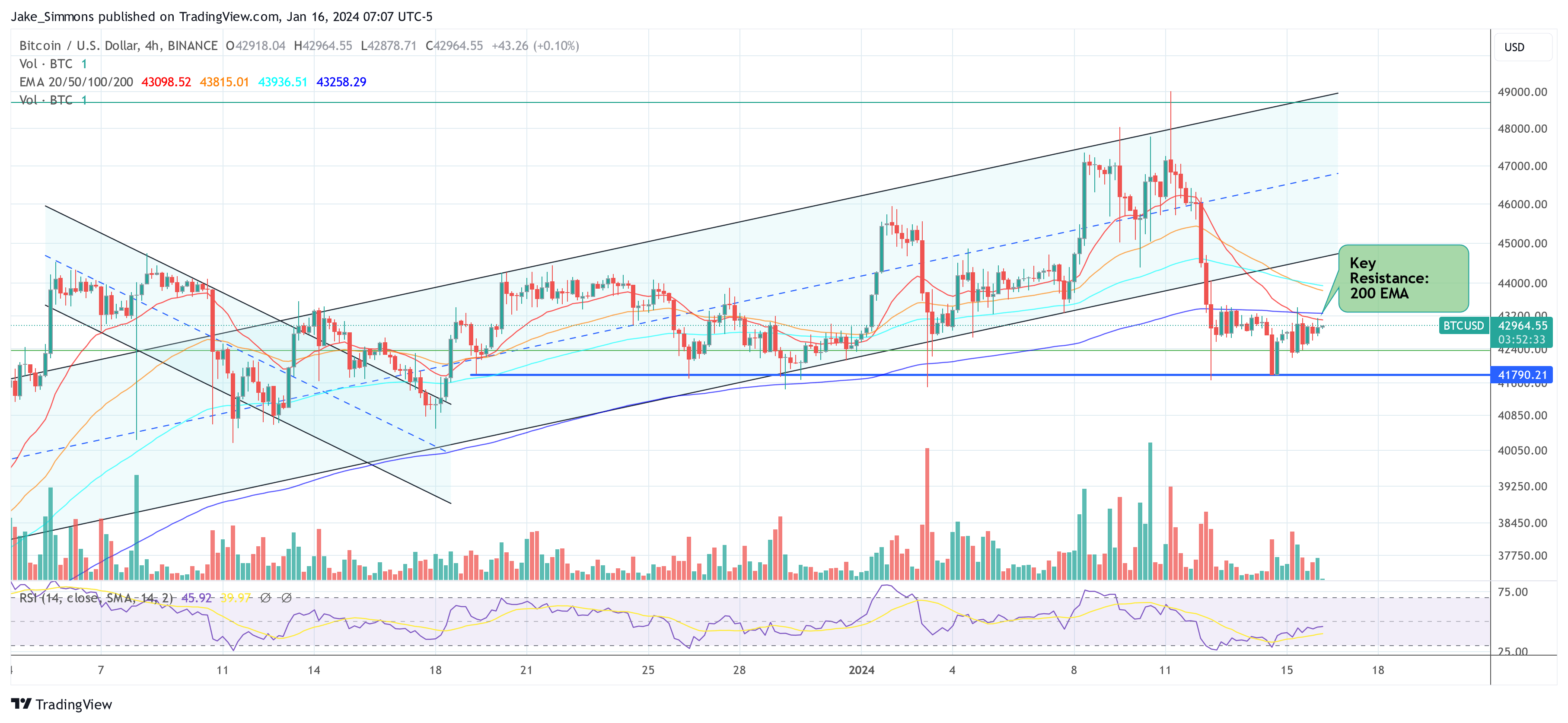Following last week’s launch of 11 spot Bitcoin exchange Traded-Funds (ETFs) in the United States, Matt Hougan, Chief Investment Officer (CIO) at Bitwise, has provided compelling advice perspective about the potential impact of these ETFs on the Bitcoin market. His comments come at a critical time, with Bitcoin’s next halving expected in mid-April 2024.
Spot ETFs can have an impact like a Bitcoin halving
Hougan draws a parallel between the impact of Bitcoin ETFs and Bitcoin’s halving events. He states: “Crypto natives have a good mental model for the impact of Bitcoin ETFs on the market: the halving.” He further explains the historical context: “About every four years, the amount of new bitcoin created halves. The price of Bitcoin has historically risen in the year +/- around the halving.”
In April, when the block number reaches 740,000, the reward drops from 6.25 to 3.125 BTC. Hougan emphasizes Bitcoin’s supply-demand dynamics, noting: “Bitcoin’s price is determined by supply and demand. If you reduce new supply, that should be good (and historically has been good) for prices.” He then quantifies the impact of the next halving: “At current prices, this will remove approximately $7 billion in new supply from the market each year.”
Getting to the heart of his analysis, Hougan compares expected ETF inflows to the halving effect. He notes that estimates for ETF inflows vary, but many people think these products will rake in about $10 billion a year for the foreseeable future.
“If that happens, it means the direct impact of the ETF on Bitcoin’s supply/demand balance would be approximately 1.4 halvings,” Hougan claims.
However, he warns about the timing of these consequences, saying:
Please note that halvings do not affect prices overnight. If the next halving takes place on April 22, we don’t expect prices to rise sharply on April 23. Historically, prices have risen in +/- the year surrounding each halving. The same will apply to ETFs.
An even greater reach?
Hougan also emphasizes the indirect benefits of ETFs. According to him, these products may have indirect benefits that are not captured in his analogy. “IMHO, the ETF is a significant positive for regulation, long-term education, etc. It will significantly increase the number of people interested in crypto and therefore have a multiplier effect.”
Concluding his thoughts, Hougan says: “Still, the halving is a pretty good mental model for the direct impact of ETFs: ~1.4 halvings, plus the significant ancillary benefits. We’ll take it.”
Hougan’s estimate of $10 billion per year in net inflows for the spot Bitcoin ETFs is quite conservative. Analysts at Standard Chartered predicted a few days ago that there will be an inflow of $50 billion to $100 billion this year. In fact, if $100 billion flows into the ETFs, the products could have an impact as strong as 14 BTC halvings.
At the time of writing, BTC was trading at 42,964.

Featured image created with DALL·E 3, chart from TradingView.com
Disclaimer: The article is for educational purposes only. It does not represent NewsBTC’s views on buying, selling or holding investments and of course investing involves risks. You are advised to conduct your own research before making any investment decisions. Use the information on this website entirely at your own risk.

